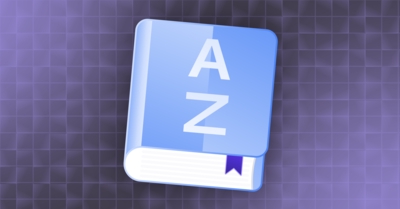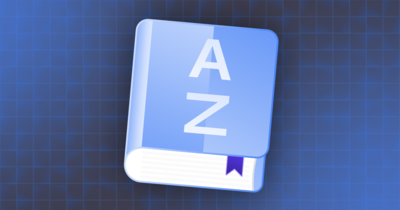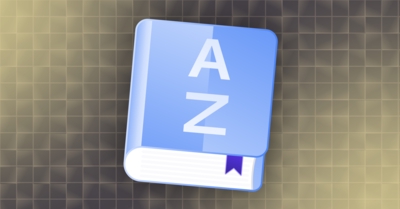Light IGA is a new category of identity governance and administration (IGA) solutions designed to address the evolving needs of modern organizations. These solutions offer a more streamlined and focused approach compared to traditional IGA platforms.
The shift to cloud computing and the proliferation of SaaS applications have created new challenges for identity security. Traditional IGA solutions, often designed for on-premises environments and large enterprises, can be too complex and expensive for many organizations.
Lighter identity governance solutions have recently emerged to fill this gap, offering a more agile and affordable alternative to legacy IGA platforms. They cater to organizations that need to:
- Manage growing user accounts and permissions: The increase in SaaS applications has led to an explosion of accounts and user permissions, making it difficult for IT and security teams to keep track of who has access to what.
- Address identity-based threats: With authentication solutions like SSO and MFA becoming more prevalent, attackers are shifting their focus to exploiting compromised credentials and excessive access rights.
- Streamline IGA processes: Manual processes for user access reviews, provisioning, and deprovisioning are time-consuming and prone to errors. Light IGA tools automate these tasks, improving efficiency and reducing risk.
Light IGA vendors offer the orchestration and automation needed to get a centralized view of access and streamline processes like access controls, user access reviews, provisioning and deprovisioning workflows, and entitlement management throughout the entire identity lifecycle — without the need to bring on a complicated, expensive legacy platform.
Key characteristics of light IGA
- Streamlined user experience. Light IGA solutions prioritize ease of use with intuitive interfaces and simplified workflows, making them accessible to a broader range of users. This reduces the learning curve and allows for quicker adoption.
- Rapid deployment and time to value. Light IGA solutions are designed for quick implementation and configuration, enabling organizations to realize value and improve their security posture faster than with traditional IGA platforms.
- Cloud-native architecture. Many light IGA solutions are built with cloud environments in mind, offering seamless integration with popular SaaS applications and IaaS platforms. This ensures smooth operation and efficient management of identities in the cloud.
- Targeted core IGA capabilities. Light IGA solutions focus on essential IGA functionalities like automated provisioning/deprovisioning, user access reviews, and basic entitlement management. This provides a strong foundation for identity governance without the complexity of a full-fledged IGA suite.
- Automation for efficiency. Light IGA solutions offer automation capabilities to streamline common tasks, reducing manual effort and improving efficiency for IT and security teams.
When to deploy light vs. full-featured IGA solutions
Choosing between light and full-featured IGA solutions depends heavily on an organization’s specific needs and circumstances.
Feature | Light IGA | Full-Featured IGA |
Target Organizations | Small to medium-sized businesses | Large enterprises |
Deployment | Faster, simpler | More complex, longer implementation |
Cost | Lower upfront cost | Higher upfront cost |
Cloud Environments | Often limited to single cloud | Supports hybrid and multi-cloud |
On-Premises Support | Limited or no support | Strong support |
Customization | Limited | Highly customizable |
Automation | Basic automation for core tasks | Comprehensive automation |
Features | Focus on core IGA (provisioning, access reviews) | Broad feature set (role mining, SOD, risk analysis) |
Compliance | Suitable for less regulated environments | Strong compliance capabilities for regulated industries |
Reporting | Basic reporting | Advanced reporting and analytics |
“Not-quite” light IGA solutions
Some tools categorized as light IGA offer IGA-related functionality but lack the comprehensiveness and depth of dedicated light IGA platforms. They often fall short in addressing the full spectrum of identity governance needs.
Key characteristics of “not-quite” light IGA solutions
- Limited scope: They typically focus on specific aspects of IGA, such as user lifecycle management or access request workflows but may not cover other critical areas like entitlement management, segregation of duties, or in-depth risk analysis. For example, Okta, known as an IAM solution, is helpful for lifecycle automation and basic access requests. However, as an identity and access management tool, it doesn’t provide the granular control over entitlements needed for comprehensive governance.
- Vendor-specific: As with the Okta example above, these tools are often offered by established vendors as add-ons to their existing identity or cloud platforms. This can be convenient for existing customers but might limit interoperability with other systems. For example, Microsoft Entra Identity Governance is tightly integrated with the Azure AD ecosystem, making it a good fit for Microsoft-centric environments but potentially less suitable for organizations with diverse infrastructure.
- Group-based approach: Some rely heavily on a group-based permissions approach, which can be efficient for basic access control but lacks the granularity needed for fine-grained governance and regulatory compliance requirements.
- Lack of extensibility: These tools may have limited customization options or integrations, restricting their ability to adapt to evolving organizational needs.
Modern IGA - The solution for lightly deployed enterprise IGA
Modern IGA represents a shift in how organizations approach identity governance. It’s about achieving comprehensive security without the traditional burdens of complexity and cost. Essentially, modern IGA is synonymous with “lightly deployed IGA,” offering a more agile and efficient way to implement enterprise-grade identity governance.
Here’s how this approach works:
- Modular approach: Modern IGA platforms are built with modularity in mind, allowing organizations to select and activate specific functionalities based on their immediate requirements. This means you can start with the essentials and gradually add more features as your needs evolve.
- Phased implementation: Instead of a “big bang” approach where you implement everything at once, modern IGA allows for a phased rollout. You can prioritize core capabilities like access certifications or provisioning and gradually expand to other areas like entitlement management or risk analysis.
- Configurability over customization: These platforms emphasize configuration options within the existing framework, minimizing the need for extensive customization. This reduces complexity, accelerates deployment, and makes the system easier to manage.
Benefits of lightly deployed IGA:
- Reduced complexity: Avoid feeling overwhelmed by implementing only necessary features.
- Faster time to value: Achieve quicker wins by focusing on immediate priorities.
- Cost savings: Optimize licensing costs by paying only for the features in use.
- Scalability: Easily expand and activate new functionalities as the organization grows and its needs change.
- Future-proofing: Avoid the need for separate point solutions by having a comprehensive platform ready to accommodate future requirements.
By adopting a modern IGA approach, organizations can achieve the benefits of a full-featured IGA solution without the traditional drawbacks. It’s about achieving the right balance of functionality, agility, and cost-effectiveness to meet the dynamic cybersecurity needs of today’s businesses.
Streamline identity governance with modern IGA
The IGA landscape has been dramatically reshaped. Organizations no longer face the impossible choice between rigid legacy systems and risky manual processes. Modern IGA, led by innovative solutions like ConductorOne, offers a compelling path forward. Here’s how ConductorOne helps today’s security-conscious organizations:
- Built for hybrid environments: Seamlessly integrates with your cloud and on-premises applications, providing unified visibility and control across your entire IT ecosystem.
- Agile and user friendly: Intuitive interfaces and streamlined workflows empower IT administrators, security teams, and end users, driving rapid adoption and minimizing frustration.
- Comprehensive yet focused: Delivers essential IGA capabilities like automated access reviews, identity lifecycle management, and self-service access requests, while also offering advanced features like just-in-time provisioning, separation of duties, and risk analysis.
- Cost-effective and scalable: Eliminates the heavy upfront investment and complex customization associated with legacy IGA, allowing you to start with core use cases and expand as your needs evolve.
- Powered by innovation: Leverages machine learning and generative AI to simplify IGA tasks, enhance decision-making, and strengthen your security posture.
To go more in depth on the differences between legacy and modern IGA solutions, check out our Guide to Modern IGA. To learn more about ConductorOne, talk to our team!




